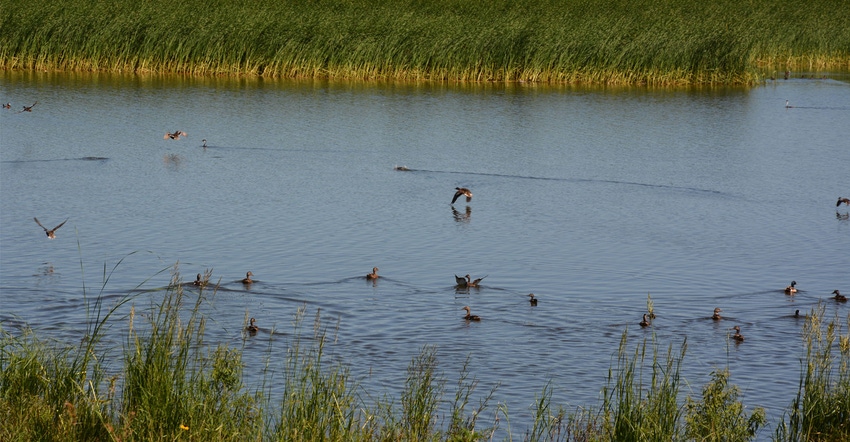February 1, 2022

Farmers and landowners will soon be able to sign up for USDA’s Conservation Reserve Program.
General CRP sign-up will be offered from Jan. 31 to March 11. The Grassland CRP sign-up will run from April 4 to May 13.
Whitney Place, Minnesota Farm Service Agency executive director, said she encourages farmers, ranchers and private landowners to consider CRP and its higher payment rates and other incentives.
In 2021, landowners nationwide enrolled 4.6 million acres in CRP, including 2.5 million acres in the largest Grassland CRP sign-up in history. There are currently 22.1 million acres in the U.S. enrolled, and FSA aims to reach the 25.5-million-acre cap statutorily set for fiscal year 2022.
CRP sign-ups
General CRP helps farmers and landowners establish long-term, resource-conserving plant species — such as approved grasses or trees — to control soil erosion, improve water quality and enhance wildlife habitat on cropland.
Grassland CRP is a working lands program, helping landowners and operators protect grassland, including rangeland and pastureland and certain other lands, while maintaining the areas as working grazing lands. Protecting grasslands contributes positively to the economy of many regions, provides biodiversity of plant and animal populations, and offers important carbon sequestration benefits to deliver lasting climate outcomes.
Alongside these programs, famers and landowners can enroll acres in Continuous CRP under the ongoing sign-up, which includes projects available through the Conservation Reserve Enhancement Program and State Acres for Wildlife Enhancement (SAFE) Program.
Climate benefits
Last year, FSA enacted a Climate-Smart Practice Incentive for CRP General and Continuous sign-ups to better target CRP in addressing climate change. This incentive aims to increase carbon sequestration and reduce greenhouse gas emissions. CRP’s climate-smart practices include establishment of trees and permanent grasses, development of wildlife habitat and wetland restoration. The Climate-Smart Practice Incentive is annual, and the amount is based on the benefits of each practice type.
Additionally, to better target the program toward climate outcomes, USDA invested $10 million last year in the CRP Monitoring, Assessment and Evaluation Program to measure and monitor the soil carbon and climate resilience impacts of conservation practices over the life of new CRP contracts. This will enable the agency to further refine the program and practices to provide producers with tools for increased climate resilience.
For more information on CRP, contact your local USDA Service Center.
Service Center staff continue to work with agricultural producers via phone, email and other digital tools. Due to the pandemic, some USDA Service Centers are open to limited visitors. Additionally, fact sheets and other resources are available at fsa.usda.gov/crp.
Source: Minnesota USDA Farm Service Agency, which is solely responsible for the information provided and is wholly owned by the source. Informa Business Media and all of its subsidiaries are not responsible for any of the content contained in this information asset.
You May Also Like




